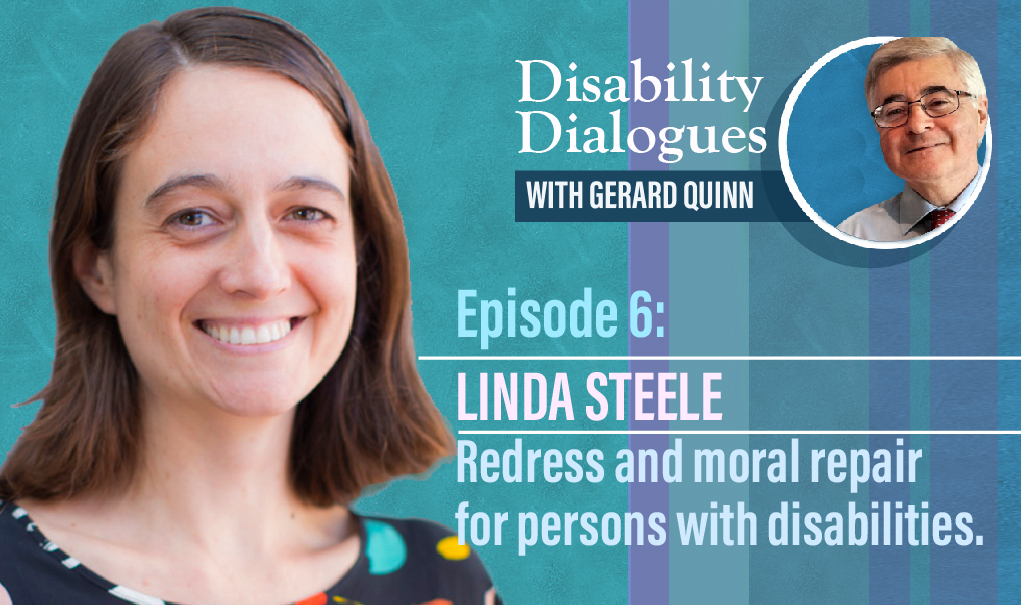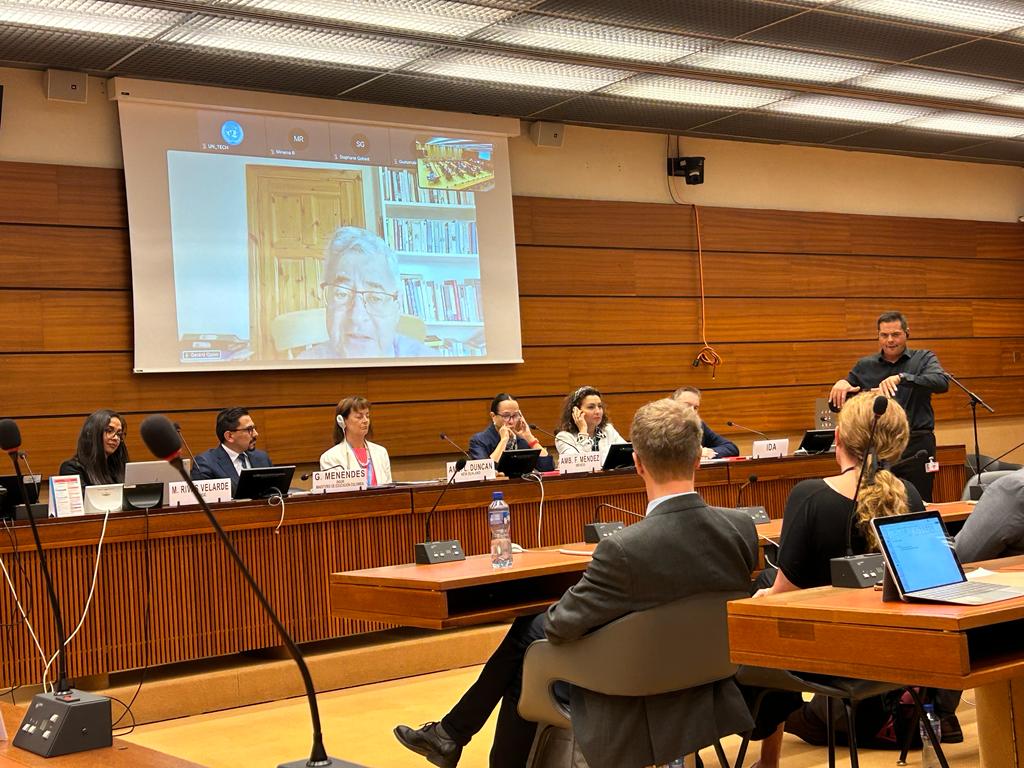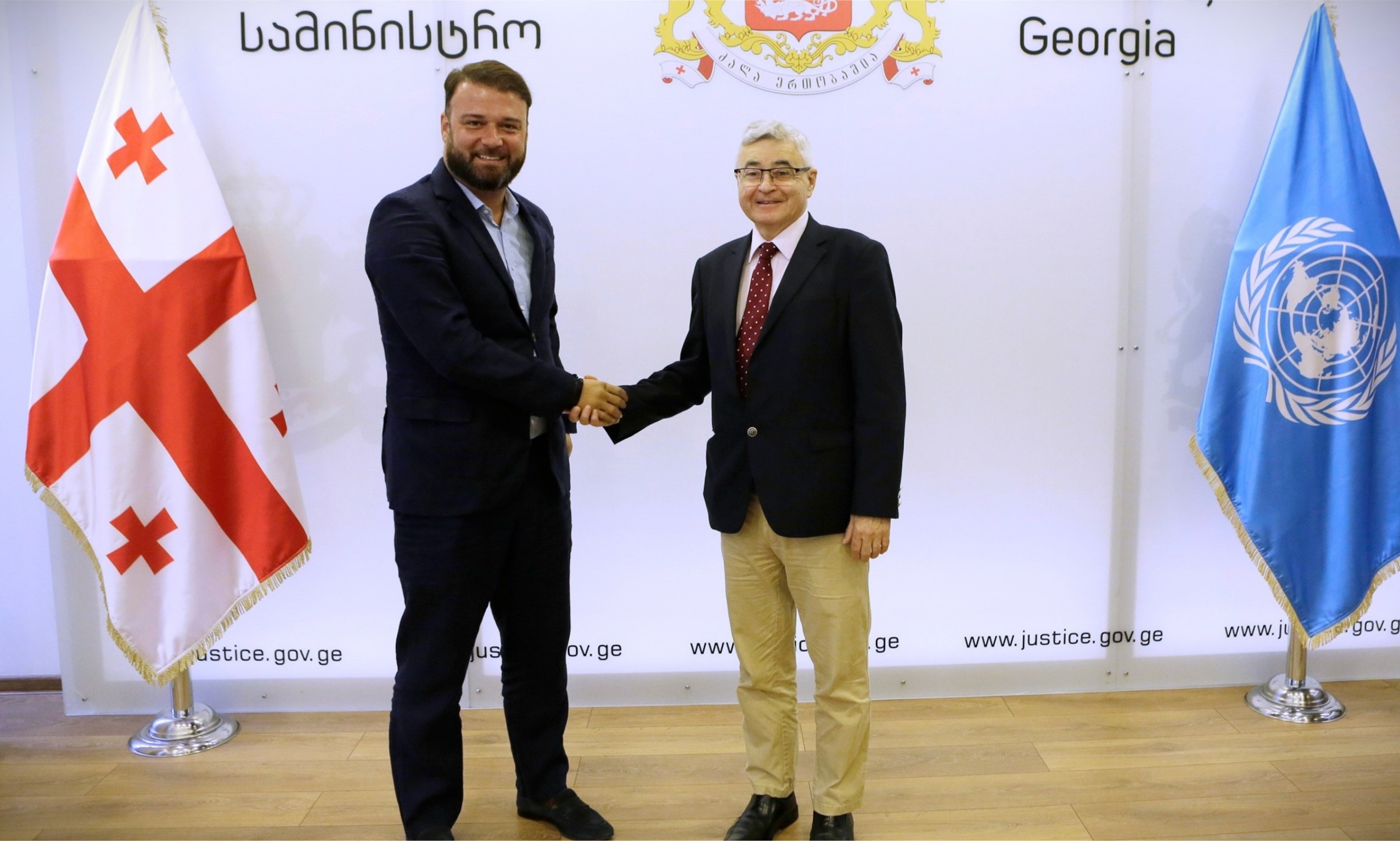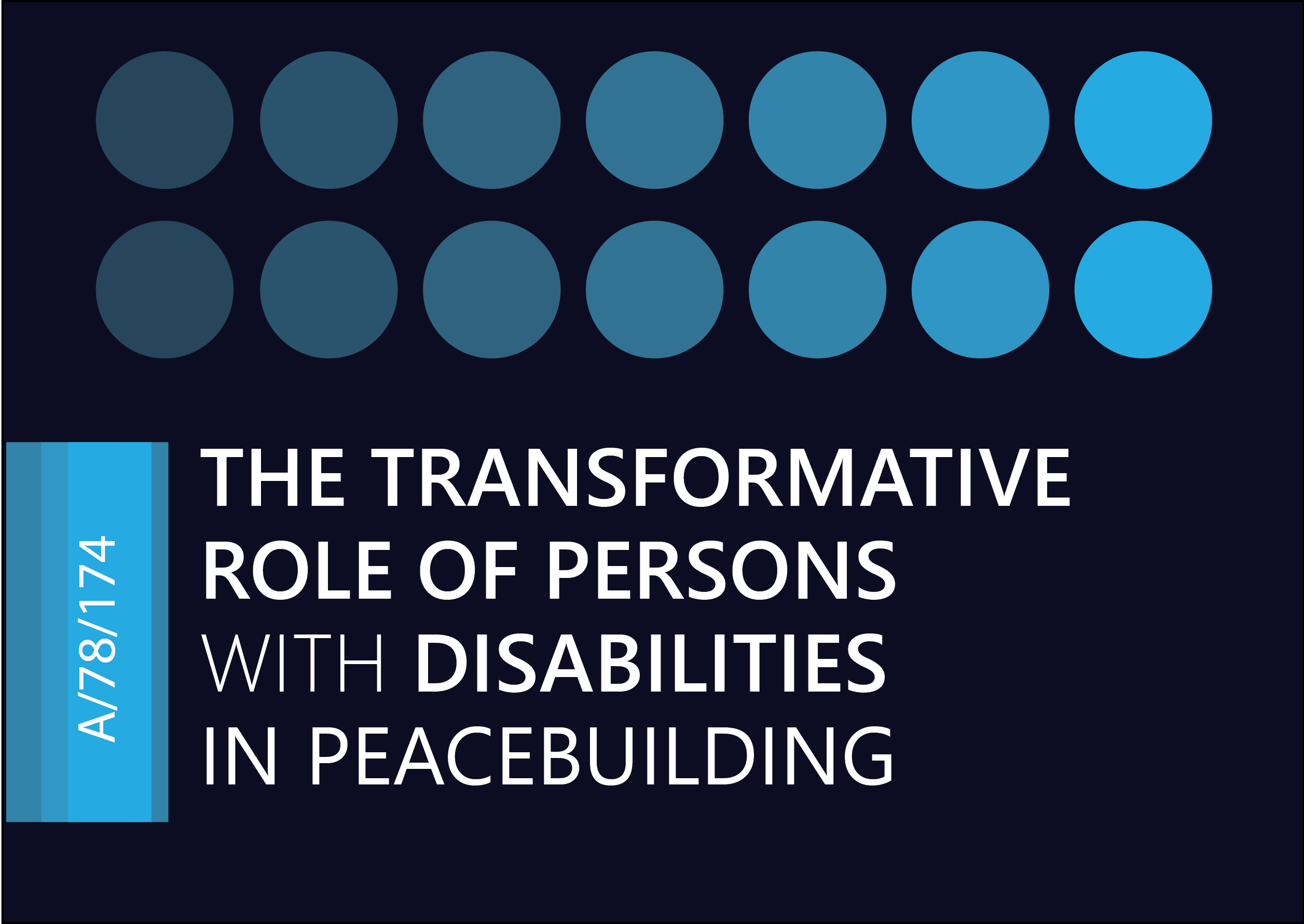Comments by Gerard Quinn on the draft document prepared by WHO and the UN Office of the High Commissioner for Human Rights (OHCHR), in October 2022.
1. I welcome the draft Draft Guidance on Mental Health, Human Rights and Legislation (Guidance) as a step in the right direction. I especially welcome its stated intention to guide fresh legislation (if any) in line with international human rights law.
2. Overall, any new direction involves a radical de-coupling of the future of mental health law from its past in the biological model of mental health and disability. Such roots are hard to dislodge and continue to dis-colour new ideas. The changes envisaged by the UN Convention on the Rights of Persons with Disabilities (UN CRPD) obviously represent a clear rupture from the past for many States and will not be achieved overnight. But what matters now is clarity on the road to reform and especially with respect to first principles.
A: The Historical Development of Mental Health Law
3. As many have attested, the biomedical model fed into, informed and indeed dominated the development and overall approach to the mental health field and mental health legislation. As the Guidance itself acknowledges, psychosocial conditions – human difference – were pathologized, defined, marked apart and effectively kept apart in separate and separable legal regimes.
4. Until relatively recently, no one seriously questioned this approach and assumed that the overall posture of ‘mental health legislation’ (limiting rights) was appropriate and, in as much as reform was needed, it could simply be tweaked or refined. Human rights norms, if relevant, were relegated to the margin. Lazy cultural assumptions were often made as to the acceptability of forced deprivation of liberty and coerced treatment. Legislative refinements, if they happened, tended to be confined to technical adjustments at the edge of the law.
B: Traditional Human Rights – Policing the Coercion Model
4. The role of human rights in the past was not to directly challenge this or the many cultural assumptions that underlay it. Human rights – in as much as they were deemed relevant – were corralled into a very narrow role of policing or mediating how rights could be withdrawn. Hence the focus of much human rights discourse in the last 30 years or so was on (1) how to telescope down (but not eliminate) the substantive scope for the imposition of coercive measures and (2) how to engraft ‘due process’ standards onto the process for withdrawing rights. Human rights doctrine tended to be invoked only in order to clarify (but not deny) the scope of substantive interventions and to refine the applicable ‘due process’ requirements. So deeply etched were these cultural assumptions that it was simply assumed, as a matter of human rights law, that ‘civil commitment law’ was perfectly compatible with Article 9 of the International Covenant on Civil and Political Rights (right to liberty) – even though Article 9, on its face, does not expressly address the issue. The legal imagination was cramped by cultural assumptions driven by ableism and the medical model of disability.
5. The function of ‘mental health legislation’ in the past was a narrow one. It was to mediate this tension between liberty and coercion. Put another way, the background assumption was that ‘mental health legislation’ was needed to police the line between appropriate and inappropriate coercive interventions. To this day, when people hear the term ‘mental health law’ they almost automatically think of the ‘needed’ limitation of rights and the process for doing so. So much so, that the term ‘mental health legislation’ has become conflated in the popular imagination with coercion. Breaking that link is crucial.
6. The ’past’ of mental health law is well captured in Chapter 1.2 of the draft Guidance. I might have been inclined to foreground this before addressing the health dimension (1.1) since the traditional response long pre-dates the advent of the overall health approach. The ‘rights based discourse’ in the 1970s was really all about embracing a narrow view of mental health and regularising it – not effectively taming or directly challenging it (p. 17). The distinction between limiting rights (the traditional role of mental health law) and breathing life into rights (the new role of the UN CRPD) is highlighted by the Guidance (P. 19). A major and wholly unwelcome bye-product of the traditional approach (reinforcing asymmetrical power structures) is well brought out in the draft Guidance (p. 20).
7. The treatment of human rights in the draft Guidance (1.4) might perhaps begin with the embeddedness of the coercion model in traditional understandings of human rights (even though this was not emblazoned on the text of the relevant human rights instruments). That is to say, the traditional human rights approach tended to internalise assumptions about psychosocial difference and simply assumed the underlying correctness of the coercion model (with needed substantive and procedural guardrails).
8. The draft Guidance might usefully distinguish between the first wave of a human rights response to coercion (from the 1970s – but which embraced and sought to regularise coercion) and the next wave represented by the adoption of the UN CRPD (which, by eliminating the tension between liberty and coercion effectively eliminates the need for mental health law as understood in the past).
C: Does ‘Mental Health Law’ have a Future?
9. If, however, the underlying predicates of the field change – and there is no doubt that that is the intent and effect of the UN CRPD – then what is the raison d’etre of mental health legislation? In other words, is there any future at all for mental health legislation?
10. Therefore, the core questions posed by the draft Guidance are (1) why is there a need for such legislation in the future when these background assumptions are removed and, (2) if legislation does have a future, then how is it distinguished from its past? Many related questions are brought to the fore: What, ideally, should States aim at and how do they pivot away from an old system toward a completely new one? Isn’t there a risk that building a new system atop an old one would risk subtly undermining progress toward a new system? Even if the form, if not the substance, of an old model is left intact and built on, will it nevertheless undercut any new model? And if the current priority is on how to breath life into rights (and not to take them away or police the process for taking them away) then what would a new generation of mental health law look like? Or does it have a future? It is instructive that the title of the Guidance is not the ‘future of mental health legislation’ but quite correctly and instead, ‘human rights, mental health and legislation.’ That is to say, the secomd wave of a human rights reaction (grounded on the UN CRPD) is firmly anchored on human rights, has implications for the traditional mental health field and profoundly changes the purpose, shape and content of any needed legislation (if any).
11. The draft Guidance seeks to unpack what a newer approach might look like (1.5) and what its constituent elements might be. It co-mingles radical new departures with the need for a new and transformed service paradigm. This is going to be a complex mix for many Governments – but a needed one. To be welcomed is its call for a move away from mental health-specific law toward a consideration of the relevant issues in more generic legislation (p.28). This fits with the insight that, as the power dynamic (between liberty and coercion) is removed from the policy mix, so too is the need for mental health law as traditionally understood. On the topic of services, it might be wise to insist on the de-siloing of services away from the health field since that field is perhaps too anchored in the coercion model.
12. Of course, one must keep separate the expressive or symbolic value of law from its more overt functions. If it is to be used to announce or embed new predicates to define (change) a field then it can play a powerful symbolic function that will help shape the flow of reform for years to come. But if its more overt functions (e.g., the traditional one to tame the limiting reach of law) predominate then it can easily undercut these positive developments.
D: New Predicates for Next Generation Legislation (if any)
13. It is plain as day that the underlying predicates of the UN CRPD substantially erode the legitimacy and continued applicability of the old mental health and mental health law approach. Underpinning traditional mental health law are assumptions about the nature of the human difference of psychosocial conditions – assumptions that such conditions amount to material differences and these differences were so wide as to justify the imposition of coercive measures. In a way, mental health law as traditionally conceived falls into the trap of traditional equality law – leaving wide space for decision-makers (legislators, courts) to ‘see’ difference and to fashion a separate legal regime responding to difference (in this case negatively).
14. What has changed is profound indeed. First of all, the UN CRPD puts the human back into human rights. It advances a theory of full personhood that is not discounted by reference to human differences and especially biomedical differences like mental health condition. In a way, this plenary conception of personhood challenges lazy assumptions about mental health. It follows that a key departure point in any discussion about the future shape of mental health legislation (if any) is personhood and human autonomy. In other words, any future legislative agenda must be grounded on – and bounded by – this core assumption and right. The pivot away from substituted decision-making toward a model of supported decision-making (with acknowledgement of the legitimacy and efficacy of peer support) must be anchored in law and policy (and programmes). This is importantly covered in the draft Guidance at 1.5.5 and again at 2.1.5.
16. One bye-product of the traditional approach is to assume that the ‘self’ with a mental health condition was distorted, that his/her ‘true self’ lay dormant, or that he/she was unreachable. Modern science shows that there are many more ways and techniques to ‘discover’ the self. In a way, black and white assumptions about mental health screened from full view the diversity of the human condition and the need for new ways to understand even informal communication.
17. Of course, human autonomy has its limits. But what is important is that limitations on rights are explored and applied consistently and uniformly across the board – and not applied directly or indirectly against persons with psychosocial conditions on account of simply having those conditions.
18. Secondly, the underlying image of the person has changed. We are no longer talking about a completely atomised, individualised conception of the ‘self’ as under traditional mental health law. Instead, we are talking about a ‘social self’ alongside an individual self – and therefore we have to be attentive to the social determinants that go to make for a fulfilled life (subjectively speaking). That is why making your own way in the world is important and being embedded in the community is important. This broadening of the lens is exactly what is required in future human rights policy. But a big question mark looms – can this be legislated for – should it be legislated for? How would one go about this?
19. Thirdly, the content, shape and role of the equality ideal has changed. As the UN CRPD Committee itself emphasises, our modern conception of equality is tied to a theory of inclusion (‘inclusive equality’). In other words, equality is not just a legal tool to measure relative treatment between ‘similarly situated’ persons or groups – it is a tool to prise open spaces that have remained closed. If mental health legislation in the past closed down these spaces then can it have any role in the future in opening up new spaces? This question is appropriately highlighted by the draft Guidance (P. 23 and 1.5.6).
20. Also of note is the fact that the word ‘mental’ is only mentioned in Article 1 of the CRPD (Purpose). So, business as usual (vis, a narrow role for human rights and a restricted agenda for mental health law) is not on the cards.
21. I welcome the fact that the draft Guidance does not call for mental health specific laws (p.10). I take this to mean that the WHO does not endorse the traditional role of law (and indeed the traditional role of human rights law) - to just tame power. The draft Guidance frankly acknowledges that a comprehensive approach goes beyond health (p.10). That is absolutely right. And the health framing should not distort or delay the other needed reforms in the field. Quite the reverse seems intended in the draft Guidance.
22. Other highly relevant rights – like access to justice, independent living – are also highlighted by the draft Guidance (1.4). They all go to a radically different agenda for change relative to the past of mental health law
E: The Relationship between Law and Services
23. And also of note, ‘mental health’ is not specifically mentioned in Article 25 on the right to health. But it is at least implicitly embraced by Article 25 in as much as Article 25 addresses access to services for all persons including those with disabilities. This includes persons with psychosocial conditions. However, that is not to say that ‘mental health legislation’ is contemplated by Article 25 and certainly not along the lines of traditional mental health legislation. In as much as it is embraced, it should not cover the traditional agenda (limiting rights) but rather specify the health care entitlements of all persons including persons with psychosocial disabilities (and always at their election). Legislation tends not to do this (specify positive rights) but that is not to say that it cannot have a role. I welcome the draft Guidance in as much as it openly acknowledges that ‘mental health’ is not exclusive to the health sector and that it highlights ‘cross-sectoral reforms’ that are ‘also needed to address the social determinants of ‘mental health and move away from biomedical approaches.’
24. The draft Guidance calls for a ‘transformation’ in the way ‘mental health’ services are provided (p. 12). This is correct and in keeping with the broad need to transform services for all persons with disabilities regardless of their impairments. I repeat, there is also a related need for the de-siloing of services from the health field. And the draft Guidance highlights flanking issues like privacy and confidentiality in the context of a new service paradigm p. 41 et seq). This too is to be welcomed.
25. This is especially needed in crisis-response situations. Here the temptation to fall back on coercive measures is obvious. But the draft Guidance seems alive to this danger (p.97 et seq). In a way, the co-creation of new crisis-response protocols that do not depend on coercion will be a true test of a new legislative approach.
26. The call for family supports (p. 94 et seq) is welcome and does not detract from the centrality of the rights of persons with disabilities. This fits with the growing debate within the UN family about the future of care and especially how formal and informal carers are treated. It is right that this long neglected issue is brought to the surface and that meaningful ways are found of bringing the two conversations closer together.
27. The draft Guidance calls for more reflection on the issue of the traditional ‘insanity defence’ (p.100). This debate has just really begun and there are important factors at play including the overall function of ‘mens rea’ in the criminal justice system. It would be good if an open and incusive process were established (e.g., in the UN OHCHR) to clarify the debate, to posit options for the future and to provide a roadmap for reform in close consultation with persons with disabilities and their representative organizations as well as the criminal defense bar.
28. Fourth, the CRPD posits that voice has to be central to any process of reform or change. Any shifting of emphasis in the underlying legislative basis must be co-created with civil society, and organizations of persons with disabilities specifically. Any new model of law (if indeed law is required) has to have widespread buy-in from civil society. No legislative change should be contemplated without this. The draft Guidance specifically calls for co-creation with and between civil society and mentions its special relevance when it comes to choice of language (p.14, 2.5.1, 3.1). This is welcome.
29. The call in the draft Guidance for a baseline understanding of existing law in any given country as the basis for moving forward (3.2) – and in close association with voices of persons with disabilities themselves – seems like a rational way of moving forward. In this way, States in association with civil society – can own the process of change and internalise the values of the CRPD. Again, when taking account of available international human rights standards (p.105), I would be inclined to mark apart pre-CRPD standards (fixated on the power relationship between the State and the individual) and the post-CRPD situation (breathing life into rights and grounded on human autonomy).
30. It perhaps bears mention that draft legislation – as such – may always be referred by civil society groups to various UN special procedures mandate holders (e.g., Un Special Rapporteurs on torture, disability, health, older persons to name a few) who can then interact with the relevant Governments (through the ‘communications’ procedure) to ensure that the draft legislation does not conflict with international law and helps advance the same. This is to be encouraged.
31. The call in the Guidance for a regular review of legislation is welcome (p. 119) and much needed. All change entails the risk of unforeseen impacts. It is important that they are kept under continuous review and that this process specifically involves all those directly impacted.
F: Conclusions
32. It is obvious that the CRPD presses a profound re-set button in the field of ‘mental health, human rights and legislation.‘ The predicates of a new approach are well developed in the draft Guidance. States are assisted in the process of change by the identification and clarification of CRPD norms and controlling values.
33. It is clear that ‘mental health law’ of the past does not represent the future. Quite rightly, the draft Guidance does not call for single or stand-alone mental health laws in the future. This would risk carrying forward – even unwittingly – an outdated framework. Instead, the draft Guidance recommends more generic approaches that seek to embed the newer rights, values and principles into relevant legislation (e.g., on legal capacity). That seems right as well as wise.
34. The draft Guidance acknowledges the secondary character of the health framing. In doing so, it self-consciously seeks ways of preventing an old agenda creeping back to cramp a newer model. Nevertheless, the health framing has its uses – especially when it comes to broadening, deepening and widening access to relevant services for all and not only for persons with psychosocial disabilities (and always at the option of the individual). Civil and political rights are interdependent on economic, social and cultural rights. In a way, a new legislative agenda brings this interdependence to light and seeks better ways of ensuring that social arrangements do not distort the underlying agenda for change but helps reinforce it. Economic, social and cultural rights (like access to services) can never be used to undermine civil rights. Optimally they underpin them. This will be a delicate process. And in my view, in this process, mental health services should be de-siloed away from the health apparatus of State.
35. I do not see this draft Guidance as an end-point. Rather, I see it as a point of departure for States in starting down their own journeys of change. It opens up space for new conversations – about the impact of human rights in the field, about the future of the mental health field and about the future purpose, content and scope of related legislation. This has to be all about breathing life into rights – and not taking them away. The draft Guidance helps to opens up the post-coercion policy imagination.





